Vertical gardening offers an innovative solution for growing plants in limited spaces, but it comes with its own set of challenges. Whether you’re dealing with poor drainage, persistent pests, or structural issues, this comprehensive guide will help you troubleshoot and overcome the most common vertical gardening problems. By implementing these practical solutions, you’ll be able to maintain a thriving vertical garden that maximizes your space while minimizing frustration.
Why Vertical Gardening Is Worth the Effort
Before diving into problem-solving, let’s remember why vertical gardening is so valuable. Growing upward instead of outward allows you to cultivate more plants in limited spaces. This approach is perfect for urban dwellers, those with small yards, or gardeners looking to maximize productivity.
Space Efficiency
A vertical garden can transform even the smallest balcony or patio into a productive growing space. Plants that would normally spread across 20 square feet of ground can be trained to grow upward, taking up just a few square feet of floor space.
Easier Harvesting
When fruits and vegetables grow at eye level, harvesting becomes much simpler. No more kneeling or bending to search for produce hidden beneath foliage. This accessibility makes gardening more enjoyable and less physically demanding.
Improved Plant Health
Growing vertically improves air circulation around plants, reducing the risk of fungal diseases. It also keeps fruits and vegetables off the ground, protecting them from soil-borne pathogens and ground-dwelling pests.
Aesthetic Appeal
Beyond practical benefits, vertical gardens add visual interest to outdoor and indoor spaces. They create living walls of greenery that can serve as natural privacy screens or striking focal points in your landscape design.
Solving Drainage Problems in Vertical Gardens
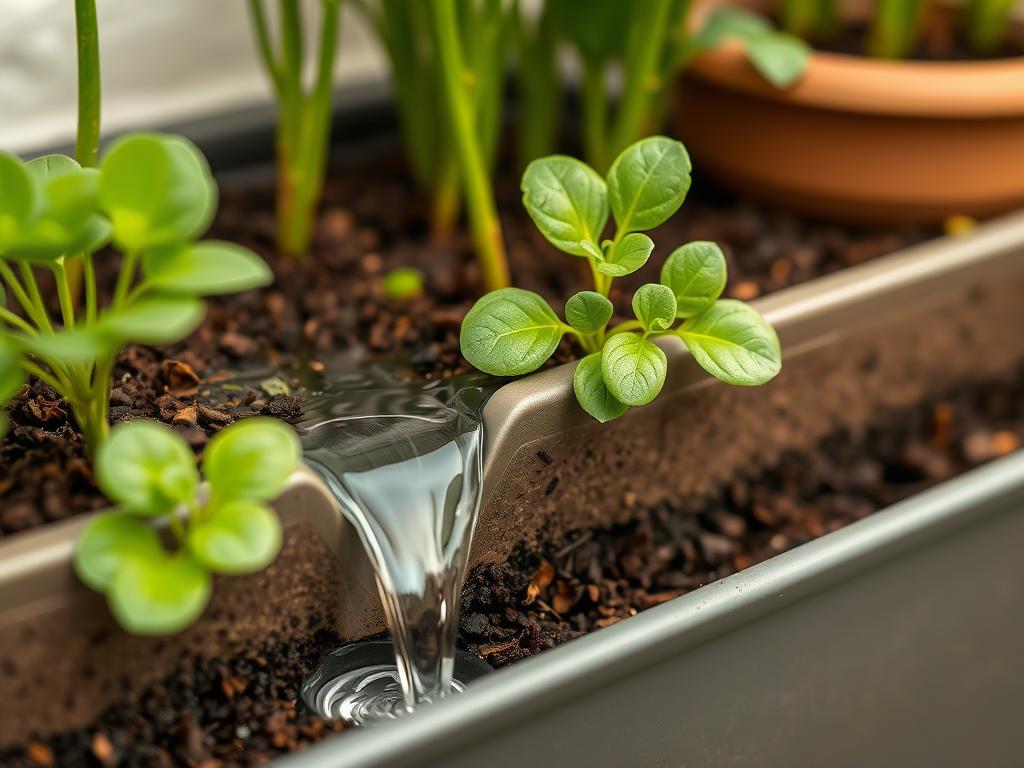
Poor drainage is perhaps the most common issue in vertical gardening. When water can’t escape properly, roots become waterlogged, leading to root rot and plant death. Here’s how to identify and fix drainage problems in your vertical garden.
Signs of Poor Drainage
- Yellowing or wilting leaves despite adequate watering
- Soil that remains wet for days after watering
- Mold or algae growing on soil surface
- Foul smell coming from the growing medium
- Water pooling rather than flowing through containers
Effective Drainage Solutions
For Container-Based Systems
If your vertical garden uses pots or containers, ensure each has sufficient drainage holes. For plastic containers, you can easily add more holes using a drill. Place a layer of gravel or broken pottery shards at the bottom of each container before adding soil to create a drainage layer.
For Pocket Systems
Fabric pocket systems sometimes develop drainage issues as soil compacts over time. Loosen compacted soil gently with a small fork. Consider mixing in perlite or vermiculite when replanting to improve drainage and prevent future compaction.
Soil Composition Adjustments
The right growing medium makes all the difference in vertical gardens. Standard garden soil is too heavy and retains too much moisture for most vertical systems.
For optimal drainage in vertical gardens, use a lightweight mix: 60% quality potting soil, 20% perlite, and 20% coconut coir or vermiculite. This combination provides good water retention while ensuring excess moisture drains away quickly.
Need More Help With Vertical Garden Drainage?
Download our free Vertical Garden Soil Guide for custom soil recipes tailored to different plant types and container systems.
Effective Pest Control for Vertical Gardens
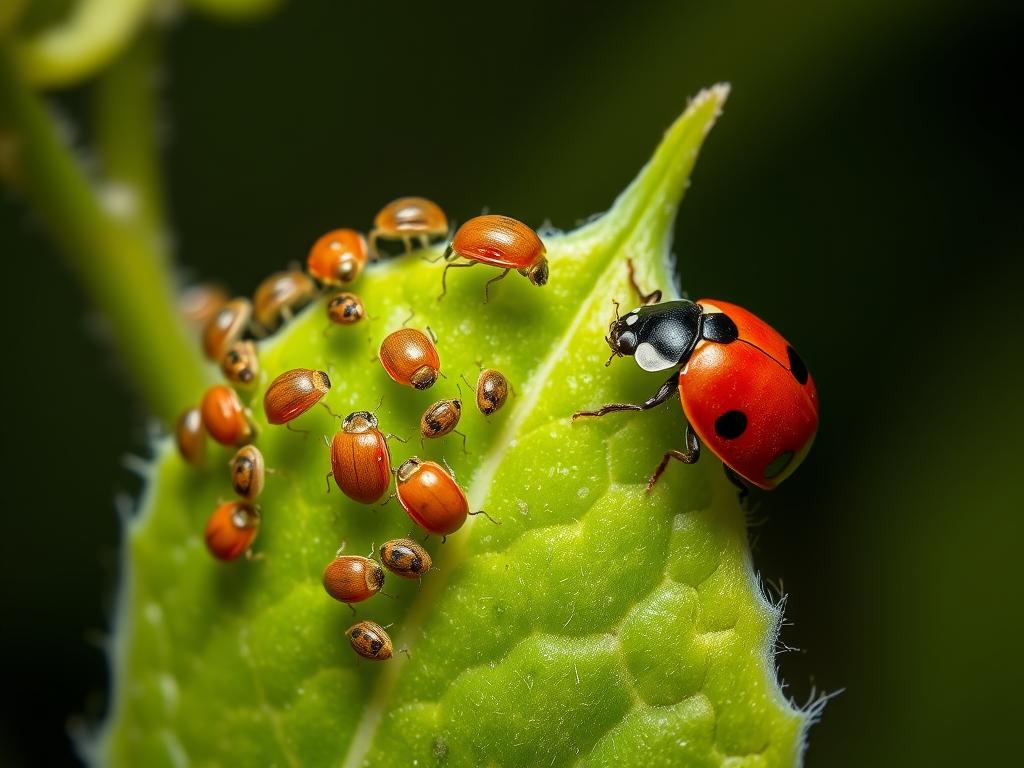
Pests can quickly become a major problem in vertical gardens, especially since the dense planting can make early detection difficult. However, the contained nature of vertical gardens also makes pest management more manageable once you have the right approach.
Common Vertical Garden Pests
Aphids
These tiny sap-sucking insects reproduce rapidly and can weaken plants. Look for clusters of small green, black, or white insects on new growth and the undersides of leaves. Sticky residue (honeydew) on leaves is another telltale sign.
Spider Mites
These microscopic pests thrive in dry conditions. They create fine webbing between leaves and stems. Affected leaves develop yellow or bronze speckles and eventually drop. Spider mites are particularly problematic in indoor vertical gardens.
Fungus Gnats
These small flying insects indicate overly wet soil conditions. While adult gnats are mostly a nuisance, their larvae feed on plant roots and can damage young plants. They’re common in vertical gardens with poor drainage.
Integrated Pest Management Strategies
Rather than reaching immediately for chemical pesticides, try these effective and environmentally friendly approaches:
Prevention
- Inspect new plants thoroughly before adding them to your vertical garden
- Maintain good air circulation between plants
- Water at the base of plants rather than on foliage
- Remove dead leaves and plant debris regularly
- Use yellow sticky traps to monitor and catch flying pests
Natural Treatments
- Spray affected plants with a strong stream of water to dislodge pests
- Apply insecticidal soap for soft-bodied insects like aphids
- Use neem oil as a natural repellent and growth disruptor
- Introduce beneficial insects like ladybugs or predatory mites
- Create barriers with diatomaceous earth around containers
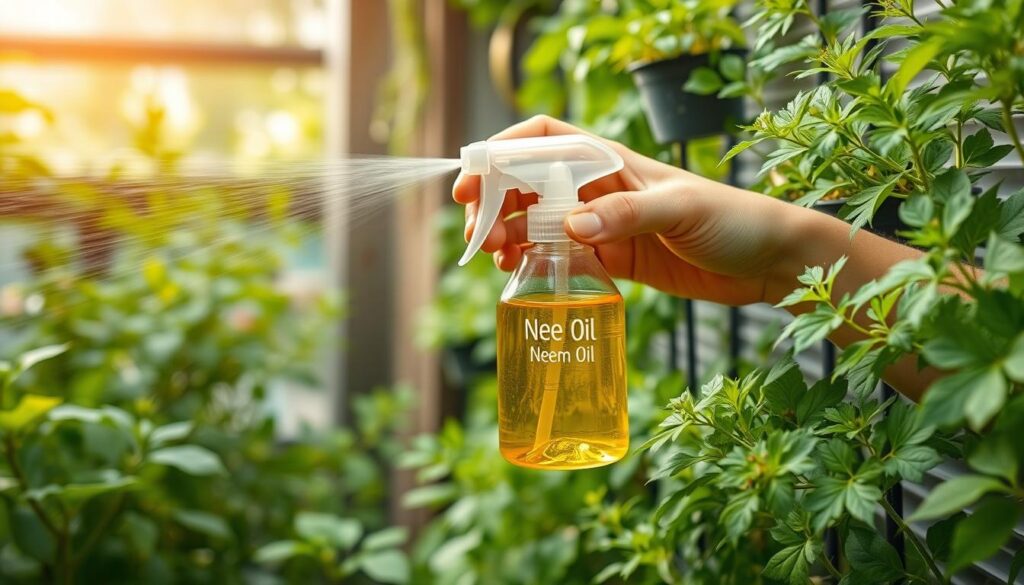
Pro Tip: When dealing with pest infestations in vertical gardens, treat the entire structure, not just visibly affected plants. Pests can quickly move between closely spaced plants in vertical systems.
Addressing Structural Problems in Vertical Gardens
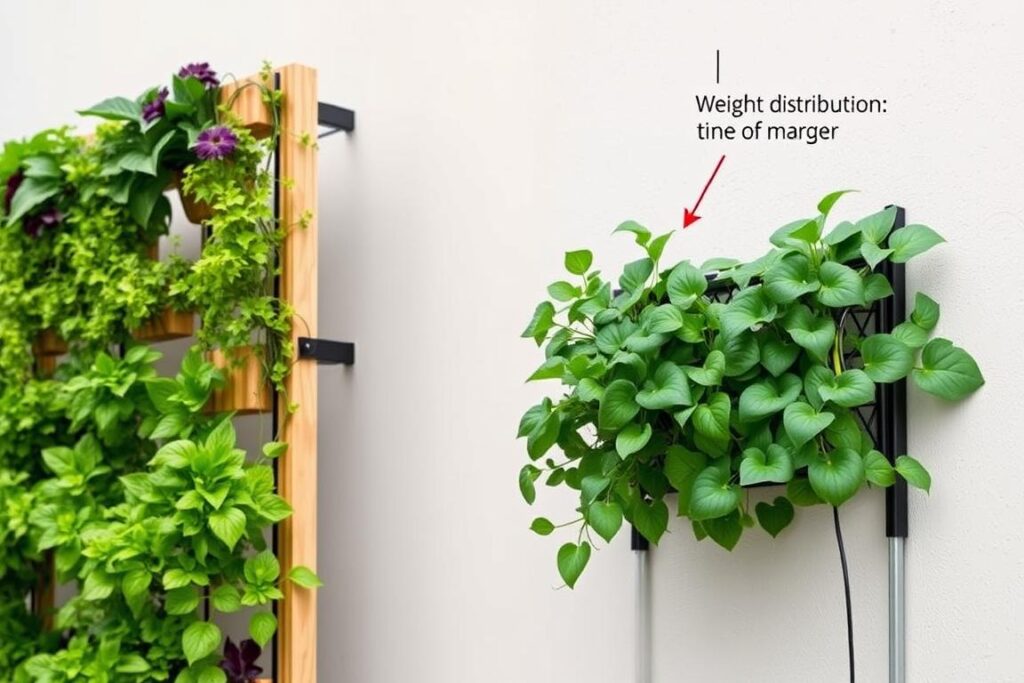
The structural integrity of your vertical garden is crucial for long-term success. Many vertical gardening problems stem from inadequate support systems that fail to account for the increasing weight of growing plants, soil, and water.
Common Structural Issues
- Sagging or collapsing shelves due to excess weight
- Wall damage from improperly mounted systems
- Tipping containers as plants grow and become top-heavy
- Deteriorating materials exposed to constant moisture
- Insufficient support for climbing plants
Building a Sturdy Vertical Garden
Whether you’re constructing a new vertical garden or reinforcing an existing one, these principles will help ensure structural stability:
Weight Calculation
Always overestimate the potential weight of your vertical garden. Consider that soil becomes significantly heavier when saturated with water, and plants will add substantial weight as they grow. A good rule of thumb: plan for at least 20 pounds per square foot for soil-based systems.
Material Selection
Choose materials that can withstand constant exposure to moisture. Cedar, redwood, and pressure-treated lumber are good choices for wooden structures. For metal components, opt for galvanized steel, aluminum, or stainless steel to prevent rust and corrosion.
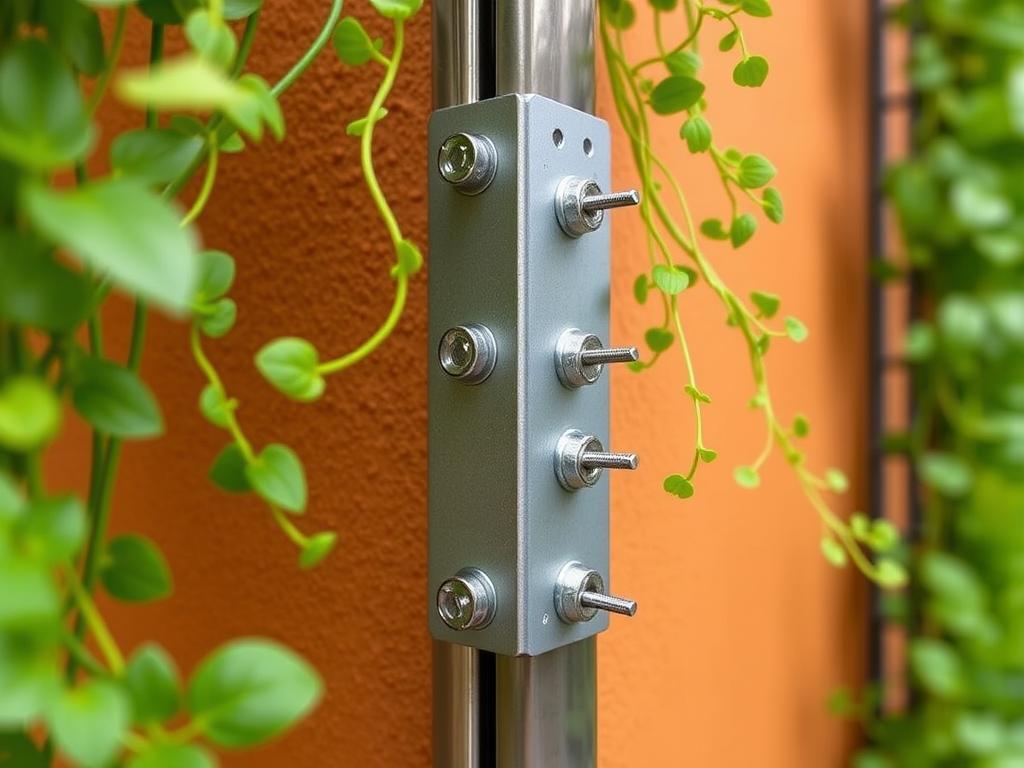
Mounting Techniques
When attaching a vertical garden to a wall or fence, always anchor into studs or structural supports, never just drywall or siding. Use appropriate anchors rated for at least twice the expected weight of your fully mature garden.
The most common structural failure in vertical gardens occurs when the mounting system isn’t designed to handle the weight of saturated soil. Always use anchors rated for exterior use and at least double the expected weight of your garden.
Reinforcement Solutions
If your existing vertical garden shows signs of structural weakness, consider these reinforcement options:
- Add diagonal bracing to prevent wobbling and provide lateral support
- Install additional mounting points to distribute weight more evenly
- Replace standard shelving with wire shelving that allows water to drain through
- Add support legs to floor-based systems to reduce strain on wall mounts
- Use cable systems to provide additional support for heavy sections
Solving Watering Challenges in Vertical Gardens
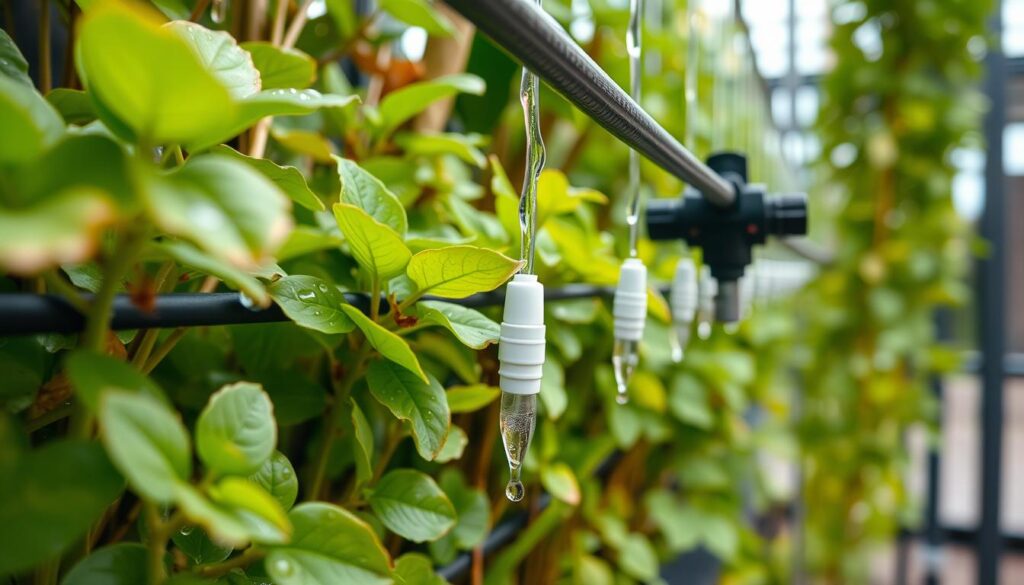
Proper watering is perhaps the most challenging aspect of vertical gardening. The vertical orientation creates unique irrigation challenges, with top plants often receiving too much water while bottom plants may remain dry.
Signs of Watering Problems
Overwatering Symptoms
- Yellowing leaves throughout the plant
- Soft, mushy stems near the soil line
- Fungus gnats hovering around plants
- Mold growing on soil surface
- Foul odor from the growing medium
Underwatering Symptoms
- Crisp, brown leaf edges
- Wilting despite cool temperatures
- Slow growth or stunted plants
- Soil pulling away from sides of containers
- Dropping flower buds before opening
Effective Watering Solutions
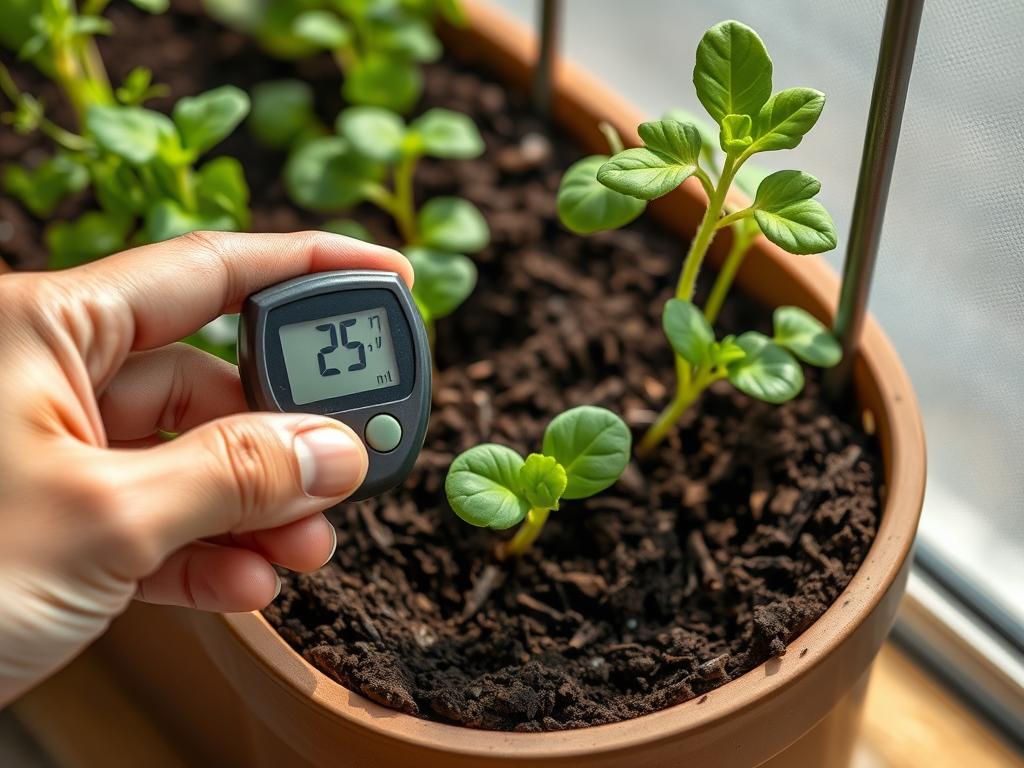
Drip Irrigation Systems
A properly designed drip irrigation system solves many vertical garden watering problems. These systems deliver water directly to the root zone of each plant, minimizing waste and ensuring even distribution.
For DIY installation, use 1/4-inch drip line with adjustable emitters. Place an emitter at each plant, adjusting the flow rate based on the plant’s water needs. Higher plants may need higher flow rates since they tend to dry out faster.
Self-Watering Options
Self-watering containers and wicking systems can dramatically improve water management in vertical gardens. These systems use capillary action to draw water from a reservoir into the soil as needed.
Water-Smart Tip: Add water-absorbing polymer crystals to your potting mix to increase water retention. These crystals can absorb up to 300 times their weight in water, releasing it slowly as the soil dries out.
Master Vertical Garden Watering
Subscribe to our weekly newsletter for seasonal watering guides, plant recommendations, and expert vertical gardening tips delivered straight to your inbox.
Choosing the Right Plants for Vertical Gardens
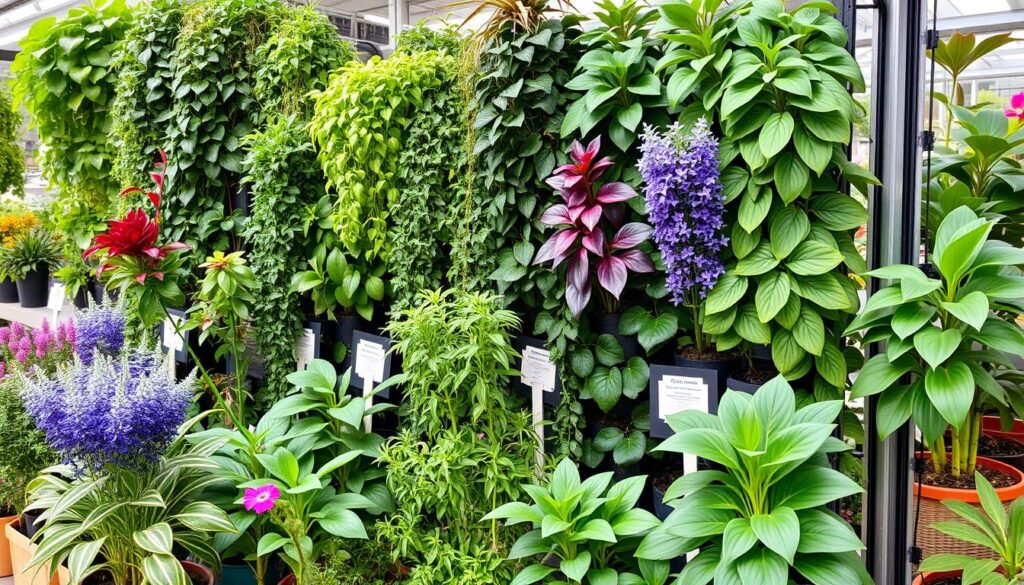
Many vertical gardening problems stem from poor plant selection. Not all plants thrive in vertical systems, and choosing inappropriate varieties can lead to frustration and failure.
Best Plants for Vertical Gardens
Leafy Greens
- Lettuce varieties
- Spinach
- Kale
- Swiss chard
- Arugula
Herbs
- Basil
- Thyme
- Oregano
- Mint (in contained pockets)
- Rosemary
Vegetables
- Cherry tomatoes
- Bush beans
- Compact peppers
- Strawberries
- Cucumbers (with support)
Plants to Avoid in Vertical Gardens
Some plants create more problems than they’re worth in vertical systems:
- Root vegetables like carrots and potatoes (require deep soil)
- Heavy fruiting plants like full-size tomatoes or melons (unless you provide substantial support)
- Invasive spreaders like mint when planted in shared soil pockets
- Plants with vastly different water needs when using a single irrigation system
- Tall or top-heavy plants that can become unstable
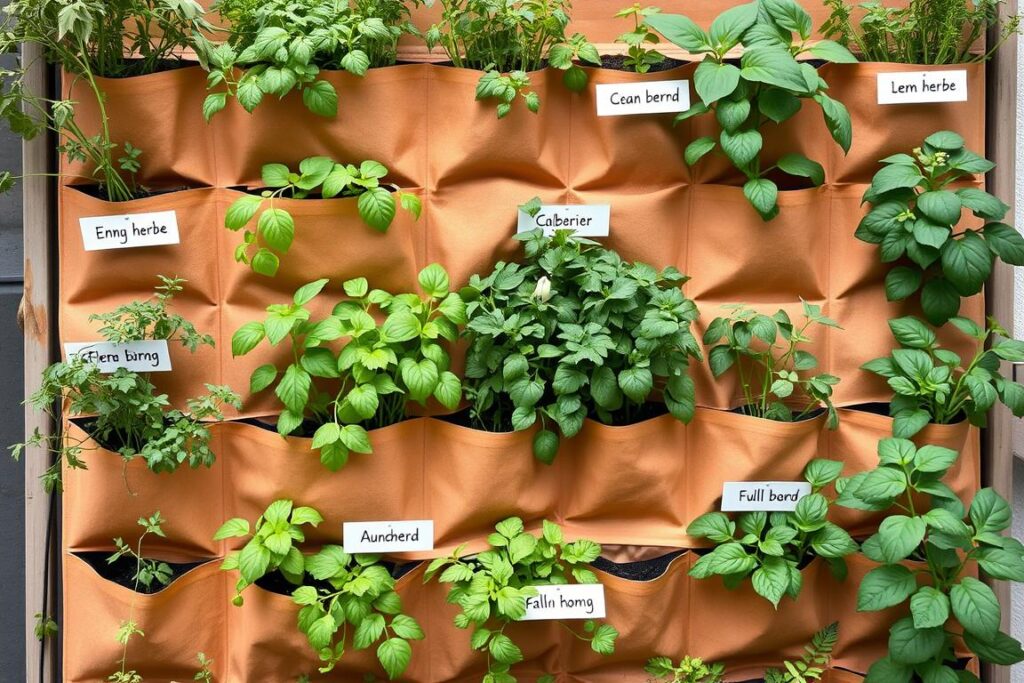
Grouping Plants Strategically
One of the keys to successful vertical gardening is grouping plants with similar needs together:
By Water Requirements
Group drought-tolerant plants like rosemary and thyme together in upper sections that tend to dry out faster. Place moisture-loving plants like lettuce and spinach in lower sections that retain water longer.
By Sun Exposure
Position sun-loving plants like tomatoes and peppers at the top of your vertical garden where they’ll receive maximum light. Place shade-tolerant plants like lettuce and ferns lower down where they’ll be partially shaded by plants above.
Can I grow root vegetables in a vertical garden?
While traditional root vegetables like carrots require deep soil, you can grow radishes, baby carrots, and small turnip varieties in deeper pocket systems or specialized containers. Choose compact varieties bred for container growing, and ensure your structure can support the weight of deeper soil.
Ongoing Maintenance to Prevent Vertical Gardening Problems
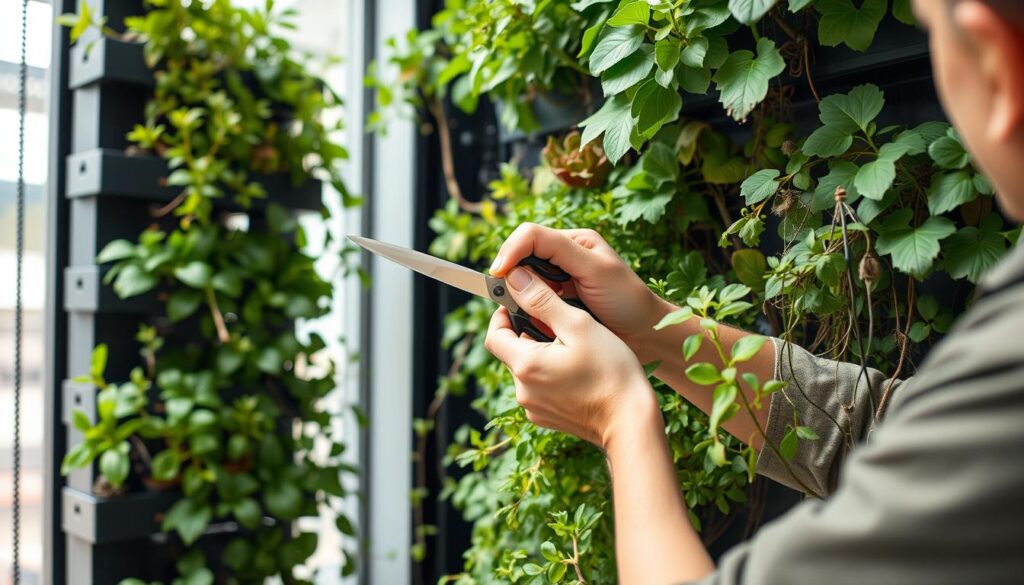
Regular maintenance is crucial for preventing and addressing vertical gardening problems before they become serious. A consistent maintenance routine will keep your vertical garden thriving year-round.
Weekly Maintenance Tasks
- Check soil moisture at different levels of your garden
- Inspect plants for signs of pests or disease
- Remove yellowing or dead leaves
- Prune overgrown sections to maintain airflow
- Check that all plants are securely supported
Monthly Maintenance Tasks
- Flush the system with plain water to prevent salt buildup
- Check and clean irrigation lines and emitters
- Rotate containers if possible for even growth
- Apply slow-release fertilizer appropriate for your plants
- Inspect the structure for signs of wear or damage
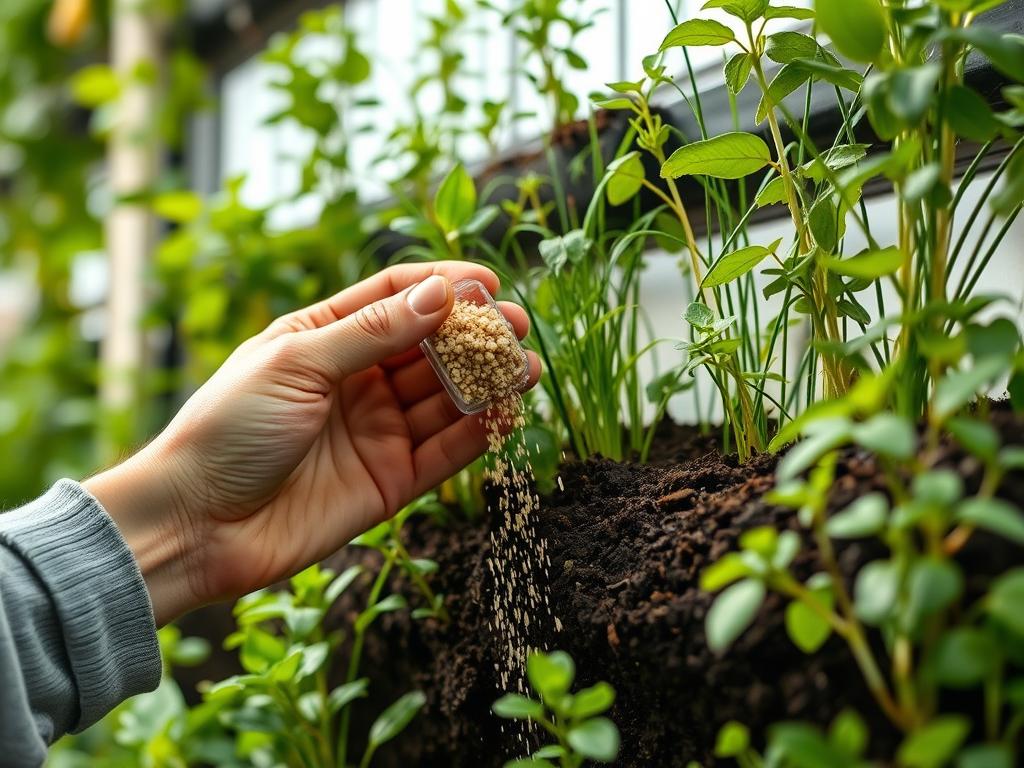
Seasonal Maintenance
Different seasons bring different challenges for vertical gardens:
Spring Preparation
Replace depleted soil in containers, check and repair irrigation systems, and add slow-release fertilizer. This is also the ideal time to replace any plants that didn’t survive winter and reinforce structural elements as needed.
Fall Winterization
For outdoor vertical gardens in cold climates, remove annual plants, insulate perennial root zones with mulch, and drain irrigation systems to prevent freezing damage. Consider adding protective covers for sensitive plants.
The secret to a thriving vertical garden isn’t just solving problems as they arise—it’s preventing them through consistent maintenance. Ten minutes of daily attention can save hours of troubleshooting later.
Creating a Thriving Vertical Garden
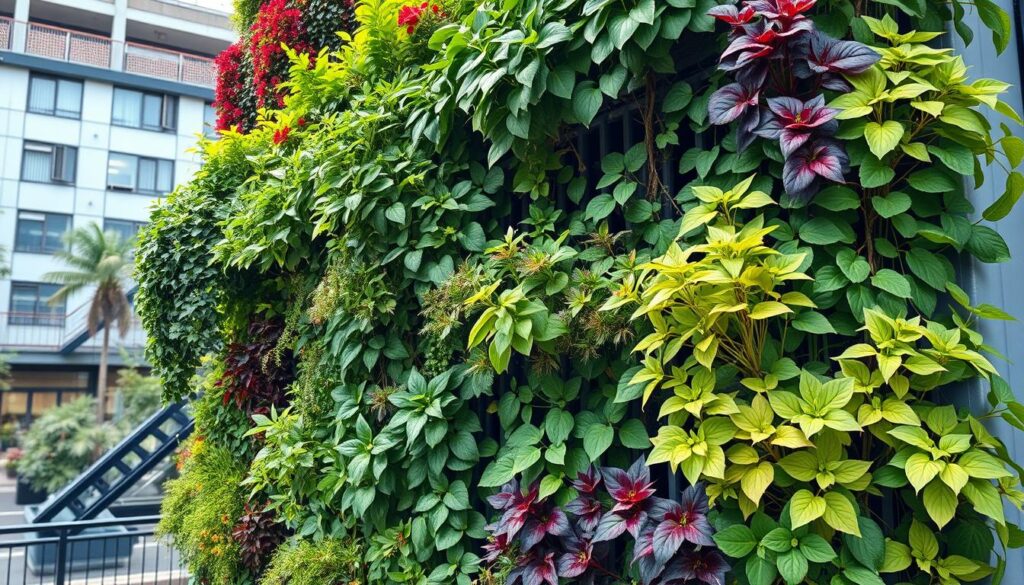
Vertical gardening offers tremendous benefits for space-constrained gardeners, but success depends on anticipating and addressing common problems before they compromise your garden. By implementing proper drainage solutions, effective pest management strategies, sturdy structural supports, and appropriate watering systems, you can overcome the typical vertical gardening problems that discourage many beginners.
Remember that vertical gardening is both a science and an art. As you gain experience, you’ll develop an intuitive understanding of your particular system’s needs and quirks. Don’t be afraid to experiment and adapt these solutions to your specific situation.
Take Your Vertical Garden to the Next Level
Download our comprehensive Vertical Garden Troubleshooting Guide with detailed solutions for over 50 common problems, printable maintenance checklists, and seasonal care calendars.
With the right approach and a bit of persistence, your vertical garden will transform from a challenging experiment into a thriving, productive, and beautiful addition to your home or landscape. Happy vertical gardening!
Will is a vertical gardening enthusiast and sustainable cultivation specialist with a passion for helping people grow fresh food in small spaces and dry climates. With years of hands-on experience testing smart irrigation systems, optimizing urban gardens, and exploring eco-friendly solutions, this author shares clear, practical tips to turn any corner into a productive garden. Whether on a sunny balcony or in a compact backyard, Will helps readers save water, maximize space, and enjoy healthy harvests year-round. When not tending to his plants, you’ll find him sipping herbal tea and sketching ideas for new sustainable projects.

